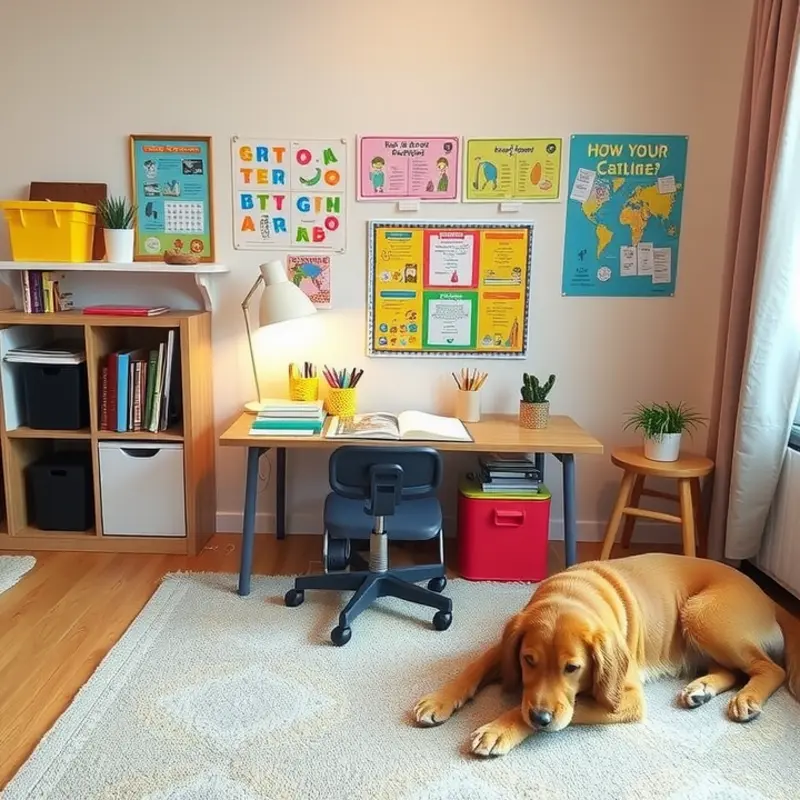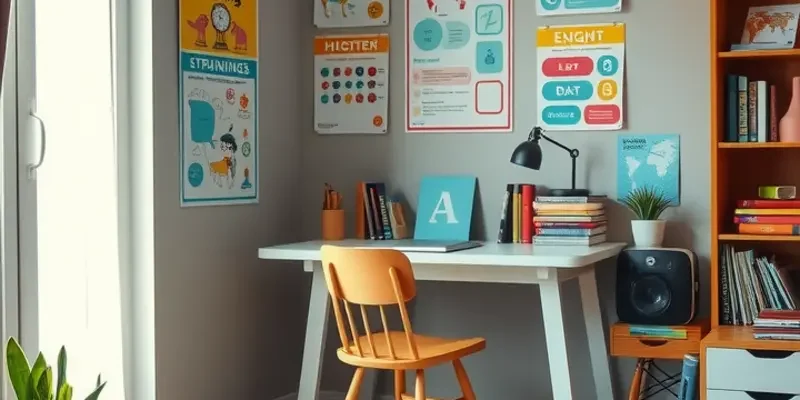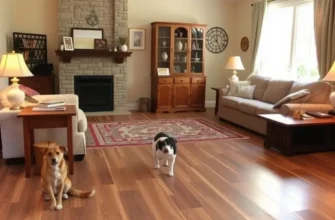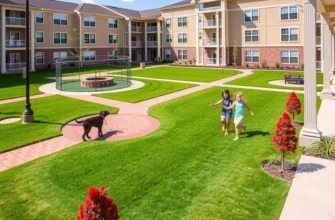Homeschooling can be a rewarding experience for families, couples, and pet owners navigating the often complex landscape of learning at home. For those living in apartments, finding the right balance between a conducive learning environment and a comfortable, pet-friendly space can seem daunting. Yet, with a few thoughtful strategies, you can set up an effective homeschooling experience without compromising your living situation. Emphasizing organization, safety, and comfort is key. In this guide, you will discover actionable tips and creative solutions tailored to suit families and renters alike. Whether you’re teaching toddlers or supporting older students, aim to make your small space both a nurturing and stimulating environment. As you foster an educational atmosphere, don’t forget to consider the needs of your furry friends, ensuring they are part of the homeschooling journey too.
Creating a Cozy Learning Space

To transform a part of your apartment into a nurturing homeschool environment, you don’t need an expansive area. Here’s how to make a small space work, ensuring it’s functional, comfortable, and accommodating for children and pets alike.
1. Define the Learning Area
Start by identifying a designated learning space. Choose a corner of the living room or a section of a bedroom. Use shelves or a bookshelf as dividers to subtly partition this area from the rest of the room. This separation can help distinguish school time from leisure.
2. Maximize Vertical Space
Apartments often have limited floor space, so think vertically. Install floating shelves to store books and supplies at various heights, within easy reach for the kids but out of grabby paws of curious pets. Wall-mounted cork boards or whiteboards are great for organizing assignments and calendars.
3. Opt for Multi-functional Furniture
Select furniture that serves dual purposes—like desks that double as storage. Benches with hidden storage can house school materials while providing seating. Choose a foldable table that can be stowed away when not in use, freeing up space for other activities.
4. Create a Safe and Inviting Atmosphere
Ensure the learning area is physically safe and inviting. Use cushioned furniture without sharp edges and secure cords and wires to prevent tripping hazards. You can make the space cozier by incorporating floor cushions and soft lighting, which creates a warm environment conducive to learning and concentration.
For additional tips on creating a safe living area, consider reading about apartment safety inspections. This guide can help ensure your setup complies with safety standards, giving you peace of mind.
5. Choose the Right Materials
Incorporate materials and supplies that enhance learning without overwhelming the space. Stock up on collapsible storage boxes for crafts and artistic materials. When picking educational tools, lean towards digital resources, such as tablets or e-books, which take up less physical space than traditional materials.
6. Incorporate Pet-Friendly Considerations
If you have pets, integrate their needs into the learning environment. Choose durable, non-toxic materials that can withstand pet antics. Designate a pet zone using a mat or a small bed, keeping them comfortable while the kids learn. Pets can provide emotional comfort and help create a soothing learning atmosphere.
By being mindful of these elements, you can ensure your apartment becomes a homely yet efficient learning haven that supports academic growth while maintaining harmony in a shared space. Remember, the key is not the size of the space but how effectively you orchestrate its functionality.
Balancing Learning and Playtime

Homeschooling in an apartment can be both a rewarding and challenging experience, particularly when trying to balance learning with play. Creating a safe yet stimulating environment for children and pets is essential for fostering creativity and maintaining focus during study sessions. Here’s how you can achieve this delicate balance.
Integrate Play into Learning
Children learn best when they’re engaged. Incorporating educational games into your homeschooling schedule can be a game-changer. Choose activities that reinforce what your children are learning. For instance, if they’re studying mathematics, use board games or puzzles that involve counting or strategy. This not only makes learning enjoyable but also reinforces the educational material through play.
Scheduled Breaks for Play
Use breaks to incorporate physical play, which helps children release built-up energy. Schedule these breaks at regular intervals to give children something to look forward to. A 15-minute break after every hour of study can work wonders for keeping young learners refreshed and focused.
Safe Play Areas for Pets and Children
In an apartment setting, having distinct areas for play is vital. Use temporary dividers or furniture to demarcate areas for study and playtime. Ensure that toys are pet-safe and clutter-free to prevent accidents. For taller furniture or shelving, secure items to prevent them from tumbling during enthusiastic play.
Creating a safe space for both kids and pets means considering renter-friendly solutions. This could include easy-to-install gates or barriers that don’t damage walls or restrict the entire apartment’s flow.
Maintain Harmony Between Pets and Children
It’s important to supervise interactions between your children and pets, especially during play. Educate children on how to safely engage with pets, teaching them gentle handling techniques. This is essential not only for the pet’s safety but also for instilling a sense of responsibility in children.
Organize and Rotate Toys
Both children and pets can tire of toys quickly. Organize toys into tubs or baskets, and rotate them regularly to maintain interest. This method also helps reduce clutter and keeps the play area orderly, which is essential in limited apartment spaces.
Encourage Outdoor Activities
While indoor play is crucial, stepping outside is equally important. Utilize apartment amenities like a community playground or nearby parks to allow children and pets to play in larger areas. These excursions can be a great way to break the monotony of apartment living and offer fresh experiences.
Creating a balanced homeschooling experience in an apartment requires thoughtful planning and a bit of creativity. By integrating structured play, maintaining clear boundaries, and ensuring safety, you can provide both children and pets with a fulfilling environment right at home.
Final words
Creating a homeschooling environment in an apartment comes with its set of challenges, but with careful planning and creativity, you can make it rewarding for both your family and pets. Focus on building a cozy learning space that fosters curiosity and safety, while also ensuring there are plenty of opportunities for play and exploration. Remember, balance is key! Encouraging your children to engage with educational materials in a welcoming setting can turn learning into a delightful adventure, even in smaller spaces. Take your time to find what works for you and remember to cherish the moments spent together. Every little effort counts toward creating an enriched learning home.









